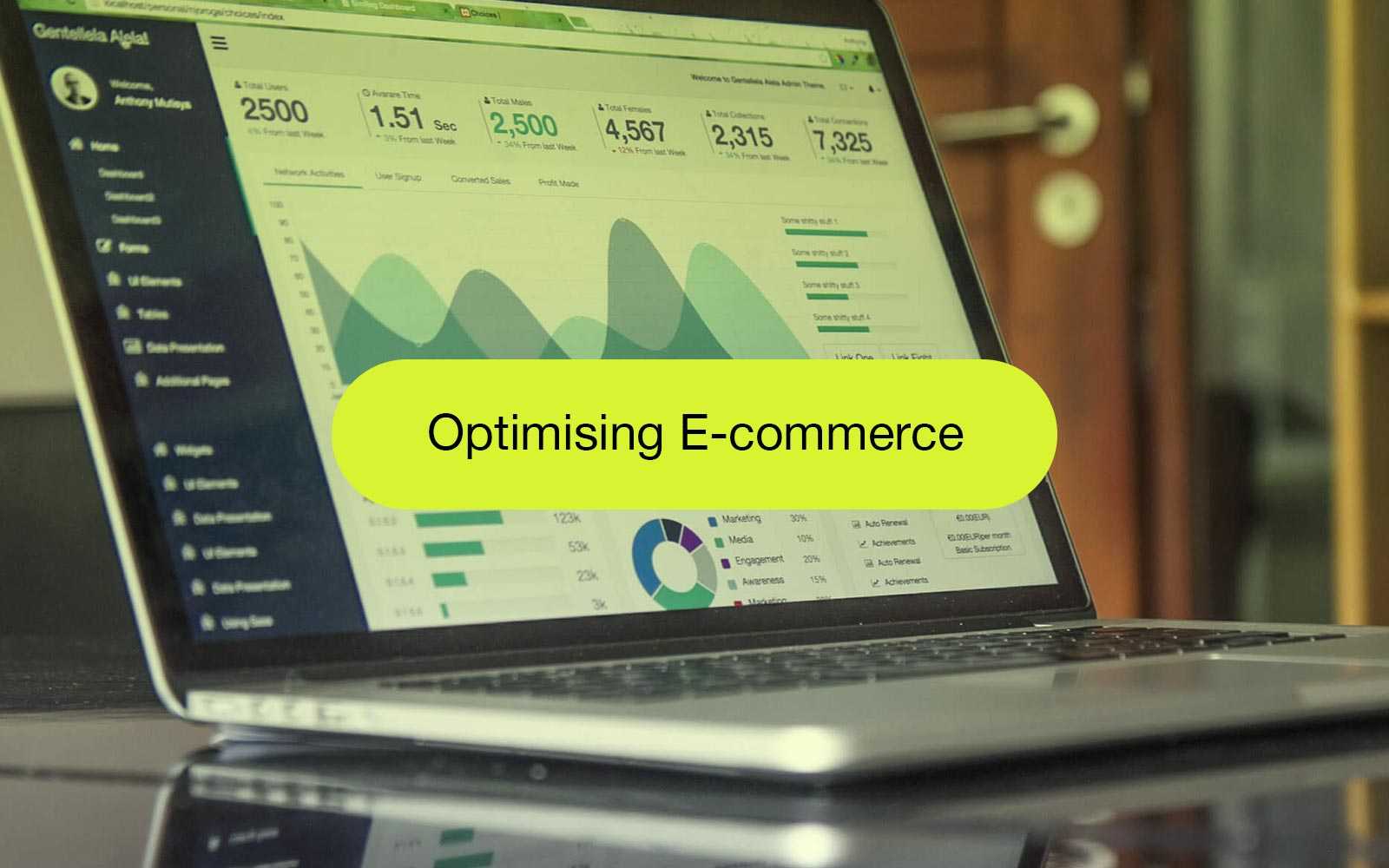Optimising E-commerce: How to Work Smarter, Not Harder
If you own an e-commerce website, you should continually be aiming to create a seamless, user-centric shopping experience that maximises sales and customer satisfaction.
While there are nuances of e-commerce optimisation, delving into minor tweaks and subtle enhancements can lead to significant improvements in your online business. We’ve identified some small adjustments that can help unlock your store’s full potential in a fiercely competitive online marketplace.
Why worry about e-commerce optimisation?
Your online store is your number one asset, and its effectiveness in enticing prospects to stay, explore, and ultimately purchase cannot be overstated. When a potential consumer lands on your site, they form an immediate judgment based on its appearance, usability, and overall appeal. A cluttered, slow-loading, or visually unappealing website can quickly deter even the most interested visitors. Conversely, a well-optimised and visually engaging site can captivate users, instilling trust and encouraging them to delve deeper into your product offerings.
Website optimisation extends beyond aesthetics; it delves into the realm of user experience. An intuitive navigation structure, well-placed calls to action, and a streamlined checkout process are all integral elements of a successful e-commerce site. Simplifying the user journey and reducing friction points can significantly increase the likelihood of conversion.
Improving your SEO
All e-commerce business owners must employ a strategic approach to search engine optimisation (SEO). Two foundational steps in this journey involve performing comprehensive keyword research and conducting a site audit to pinpoint user experience and organic traffic issues.
Keywords are the currency of online search. They are the phrases and terms potential customers use when seeking products or services online. To optimise for search engines, you need to understand the language of your target audience:
- Begin by identifying keywords relevant to your products with a high search volume and low competition.
- Don’t overlook long-tail keywords—phrases that are more specific and typically less competitive. While they may have lower search volumes individually, their combined impact can be significant, especially for niche products.
- Analyse the keywords your competitors are targeting. This can provide valuable insights into gaps in your own keyword strategy and uncover opportunities to outperform them in search results.
- Consider the intent behind keywords. Are users searching for information products or making buying decisions? Tailor your content and optimisation efforts accordingly to meet user needs at each stage of the purchasing journey.
A site audit comprehensively examines your website’s technical and on-page elements. It serves two crucial purposes: identifying issues hindering user experience and diagnosing SEO-related problems that might limit your organic search visibility.
Assess your website’s technical infrastructure. Look for issues like slow loading times, broken links, mobile-friendliness, and duplicate content. Addressing these problems can improve both user experience and search engine rankings.
Why you need great content (and copy)
The difference between a fleeting visit and a committed purchase often hinges on the quality of your copy. Great copywriting is more than words on a product page; it’s a persuasive art that can cast a spell, evoke emotions, and guide customers towards a resounding “Yes!” to the purchase.
Excellent copy doesn’t merely inform; it captivates and connects. It taps into the emotional reservoir of your audience, stirring feelings of desire, curiosity, or urgency. By weaving a compelling narrative around your product, you can elicit emotions that resonate with potential customers.
- Paint a picture of why your product will enhance the customer’s life.
- Create a sense of urgency by emphasising limited quantities or time-sensitive offers.
- Address common pain points and challenges your customers face. Show that you understand their concerns and that your product is the solution they’ve been searching for.
E-commerce customers often need help with doubts and hesitations before committing to a purchase. Great copy anticipates and addresses these concerns head-on, providing reassurance and clarity.
Simplify your navigation
Effective navigation optimisation is the compass that guides both visitors and search engines through the labyrinth of your website. This process involves fine-tuning various aspects of your site’s architecture, structure, and labelling to ensure that finding and accessing information is effortless and delightful. Whether on desktop or mobile, it’s all about creating a user-friendly roadmap that leads to a seamless and satisfying online experience.
Crafting a logical and intuitive information architecture is at the heart of navigational optimisation. This encompasses the way your website’s content is organised and categorised. A well-structured taxonomy can greatly enhance the discoverability of your content and products.
Design a clear and coherent hierarchy that categorises content logically. Whether it’s product categories, blog topics, or service offerings, a well-defined structure helps users quickly locate what they’re seeking. Consider the paths users are likely to take. Create intuitive navigation menus and links that facilitate these journeys. Users should always feel confident and confident about where to find relevant information.
The structure of individual web pages also plays a pivotal role in navigation optimisation. Each page should be designed with user-friendliness in mind. Maintain a consistent layout and design throughout your website. This includes elements like headers, footers, and sidebars. Familiarity breeds comfort for users.
Strategically place clear and compelling CTAs on each page, guiding users toward the next step in their journey, whether purchasing, signing up for a newsletter, or exploring related content.
Always remember: Optimisation is not set-and-forget
If there is one thing it’s crucial to remember, optimisation is not a set-and-forget endeavour. It’s a dynamic process that demands continuous attention and adaptation. Just as the needs and preferences of your audience evolve, so do the algorithms of search engines and the technologies shaping online experiences.
To stay ahead in the competitive world of e-commerce and web presence, make optimisation an integral part of your ongoing strategy. Regularly assess and refine your tactics, staying attuned to changing trends and customer feedback. By embracing this mindset of perpetual improvement, you’ll ensure that your online presence remains relevant and thriving in the ever-shifting digital terrain.
